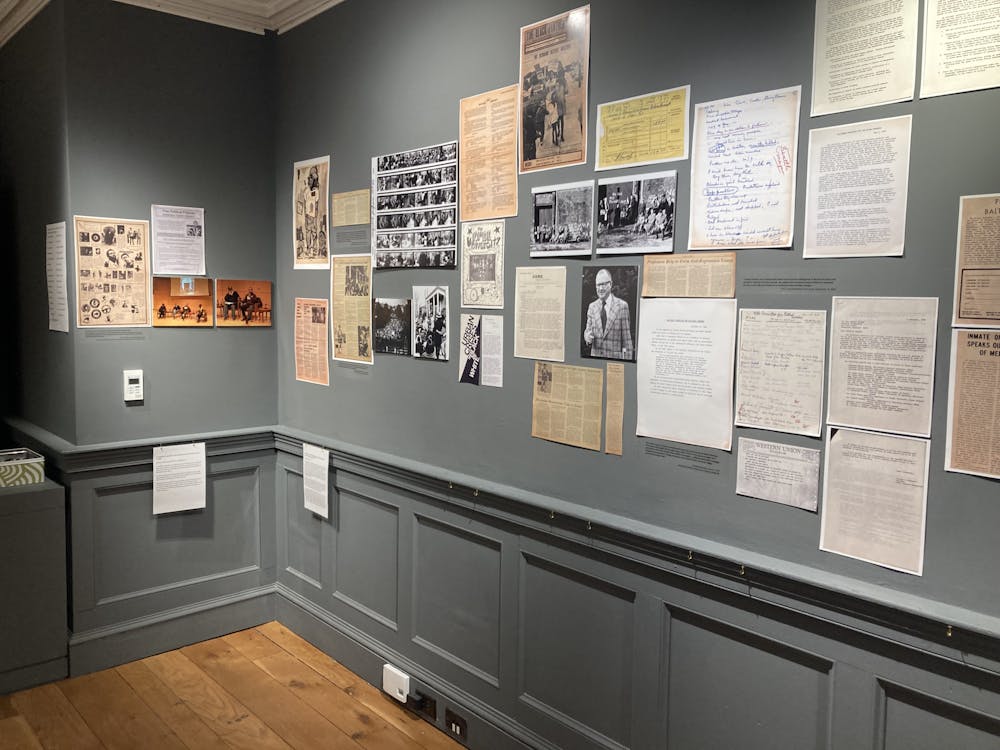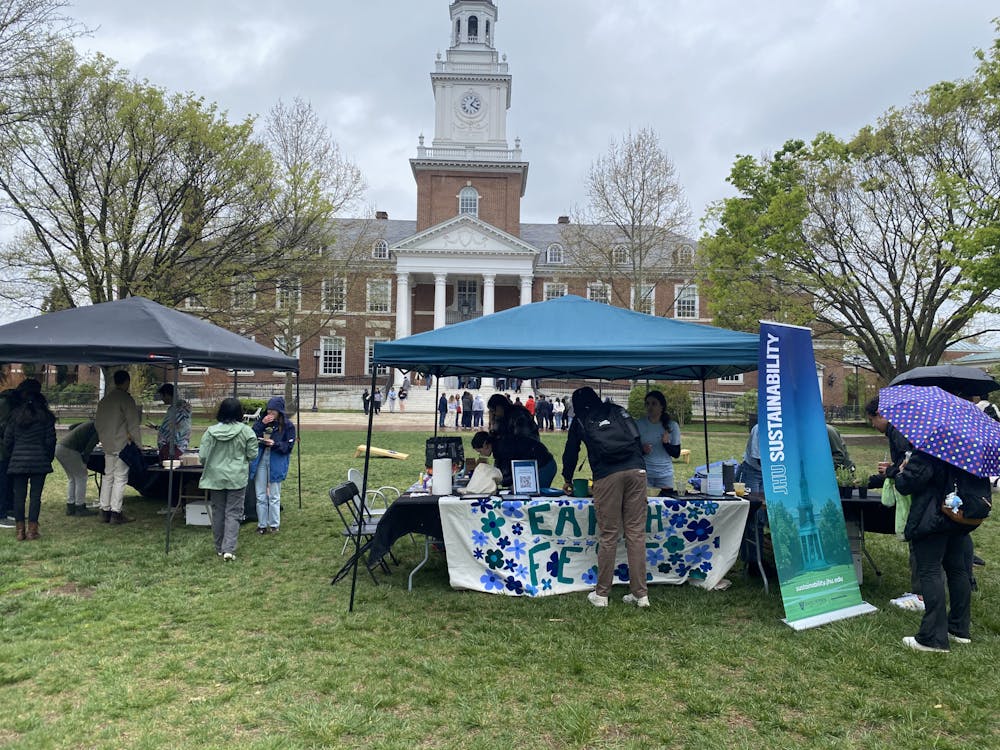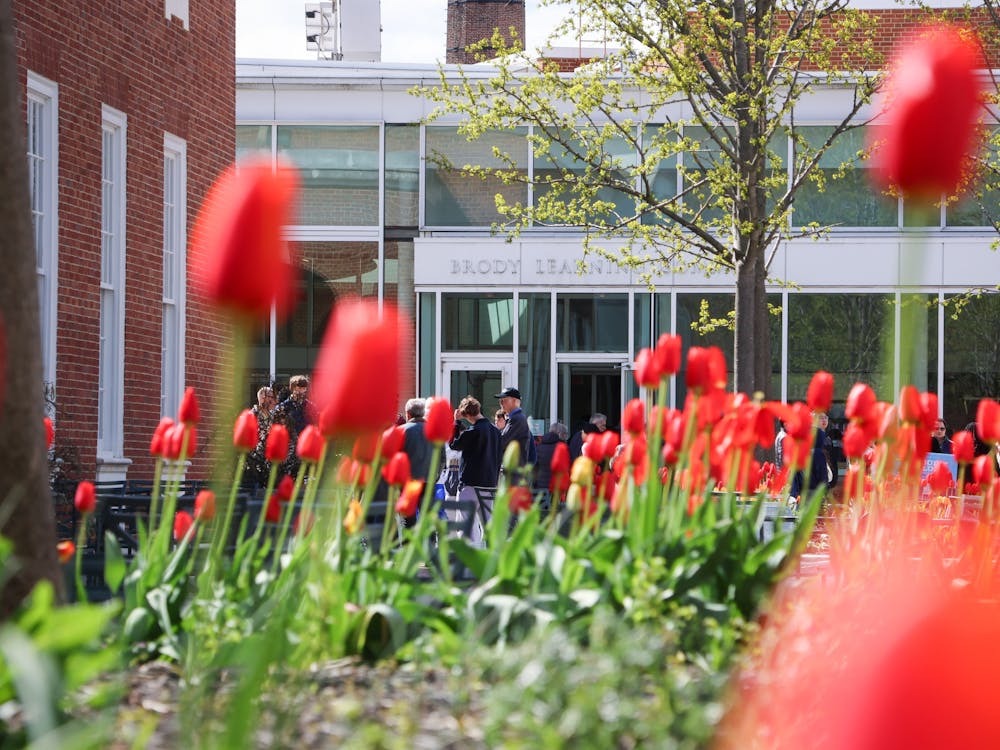The Maryland Institute College of Art (MICA) hosted a discussion about defining democracy at a symposium entitled “What Is Democracy?” on Friday, Sept. 22. The event was part of a two-day programming series hosted by MICA to address the state of democracy in the U.S.
In the closing event, Hopkins Associate Professor of Political Science and Africana Studies Lester Spence spoke alongside conceptual visual artist Mel Chin, who is known for the political nature of his large-scale public works. The two spoke about the role of art in democratic societies and how citizens can do more to help define democracy.
Spence and Chin began the discussion on monuments and identity in light of the recent removal of multiple Confederate statues in Baltimore. Chin shared his thoughts on the value of public monuments.
“When the World Trade Center came down, I proposed no monument and no memorial,” he said. “Instead you build relationships, and that’s what I truly believe in. You must decenter your occupation with tragedy because if you don’t, you won’t have empathy. You will only have great emotional feelings about what happened to you.”
The speakers also discussed the ongoing debate in the community regarding the removed confederate statues and what, if anything, should replace them. Some are in favor of placing statues of black historical figures on the now-vacant pedestals, while others like Chin and Spence argue that these pedestals should remain empty.
“When they removed the statues, there actually were more spaces for contemplation than before,” Spence said. “It is actually really difficult, in this moment, to drive by them without looking at them.”
Though Mayor Catherine Pugh decided to remove the monuments, the decision was prompted by a national activist push centered in cities like New Orleans and Baltimore. Spence said this showed that the removal of the monuments reflected true democracy.
“We think of democracy not so much as a form of government but as a fleeting moment, where we can actually process and construct our sense of ourselves as the people,” he said.
Chin then demonstrated several of his art projects that aimed to explore how power structures embedded in our community can enact devastating tolls on vulnerable populations, including Flint Fit, which engages with the fallout of widespread lead-poisoning in Flint, Michigan.
Chin said that his art reflects a unique perspective in a political society
“I’m a product of my age,” he said. “When you experience racism or injustice, then you realize that art is all about voice. And you also realize that it can also be delusional. I think it is living a critical life that allows you to become an artist.”
Chin said that artists were important in modern society because they bare their souls. He contrasted art to business and military practices which he said have transformed society.
He argued that although artists create counter-narratives, they shouldn’t seek to just criticize but rather push activism into motion.
“[Artists] should be put in the position not to create polarity but motion,” Chin said. “Movement is your friend. Art needs to be slippery so you fall in the right place and something will catch you.”
Spence addressed how Hopkins students can encourage similar conversations about the current state of our democracy through art. He said that holding a conversation is a good starting place and encouraged students to engage.
“It won’t take much in terms of resources for student organizations just to do an event like this,” he said. “And it won’t be hard for a student to create an organization for the purpose of doing something like this. In the end, it’s just about doing it. I bet a lot of students will be interested in this and all they need is a vehicle. When the vehicle appears, they jump on.”
Chin addressed why he is drawn to large-scale public works, saying that his aim as an artist went beyond making money.
“A city or place has to encourage artists to speak up because art already exists in those communities,” he said. “Some might still hold arts, like those Confederate monuments, as an exclusive club. We have to de-define arts. We have to invite more people. Therefore you have to have actions instead of words to embody the concept of hope.”
Jessie Houff, a student at MICA, said that while she had attended many of the events addressing democracy, she was particularly interested by the talk with Spence and Chin.
“With the new administration in D.C., I believe actions are more important than words,” Houff said. “Hope without action is unrealistic. And I think what we are trying to do here is to create art rather than just make things to put on our studios. We need to reach out to the community.”















Please note All comments are eligible for publication in The News-Letter.